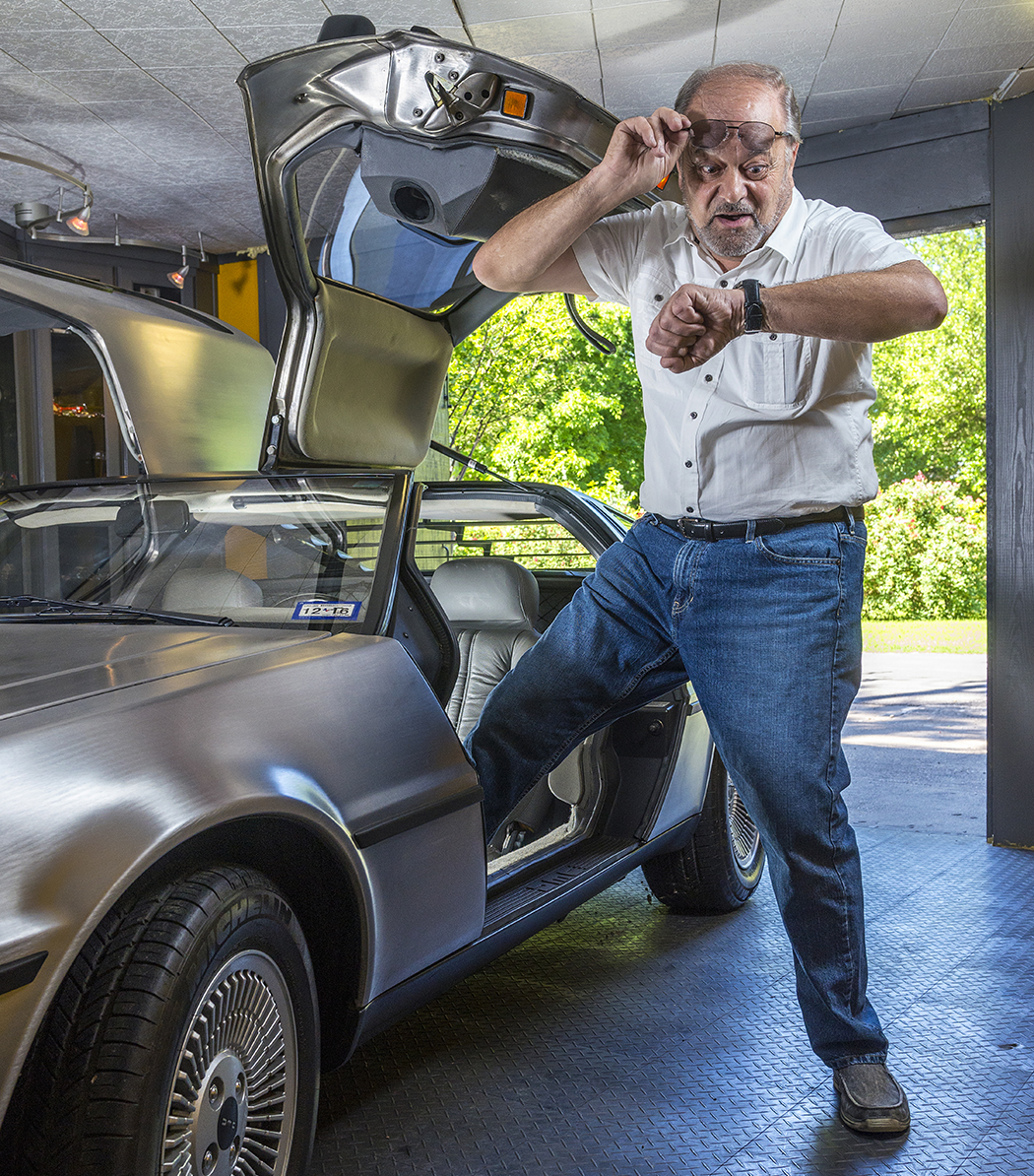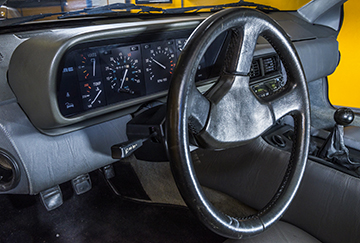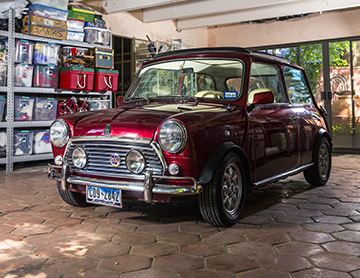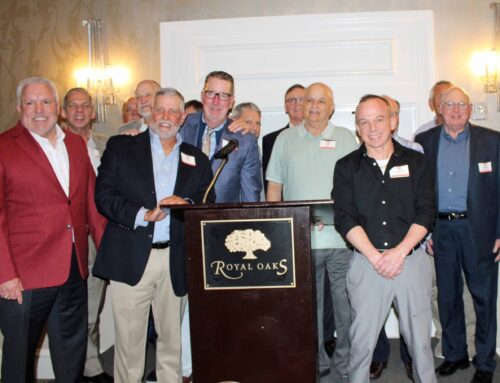
In his best Doc Brown pose, Jaime Sendra steps out of his 1980 DeLorean DMC-12. (Photo by Danny Fulgencio)
Bear hugs are what he gives bears. He once brought a knife to a gunfight, just to even the odds. If he were to punch you in the face you would have to fight off a strong urge to thank him. He lives vicariously … through himself.
He is Jaime Sendra, and he gives the Dos Equis dude a real run for his money. What follows is what we printed about Sendra in our story about car enthusiasts. There was so much more I did not have space to include. For example, I did not have the opportunity to mention that he created the City of Richardson logo. Pro bono. He lived in Richardson before moving to the White Rock area. He loved it and wanted to leave the city a gift, he says. The city happened to be re-branding before he moved, so he created the logo we see today when driving through the suburb. I also am not sure I properly stressed the amazing story of his father’s business in Mexico, Bimbo, and the fact that Sendra opted to leave the fortune — we are talking a billion-dollar business — and come to America to pursue his own.
Also, remember the time that Aston Martin was found floating in White Rock Lake? It was the same color as Sendra’s Aston Martin, so he says he got about 100 phone calls that morning. He walked to the spot to see what had happened, he recalls. “I was curious … oooohhh man.” He really has no more words for how much the sight pained him. He let me start his Aston Martin and rev the engine. I think I finally understood.
Street art
Everything that surrounds Jaime Sendra is impressive. Colorful blooms and foliage line his long gravel driveway, the pinnacle at which presents a picturesque view of White Rock Lake. A playground worthy of a public park and the remnants (a bouquet of Mylar balloons) of a grandchild’s recent birthday party occupy a sprawling yard.
Warm greetings flow as the 72-year-old briskly makes his way to the gate. He shakes hands and asks a few questions; he responds generously to the ones posed to him. Within a few minutes it is understood that his parents were Mexican, by way of Barcelona, Spain, and that his father founded Bimbo Bakery, now a multinational billion-dollar company. And that Sendra didn’t really want to be in the bakery business. He was an artist, a graphic artist, with a pioneering mindset. He came to America in 1968 to study, met his wife, Peggy (“There were bells in the hills the first time I saw her,” he says, his Spanish accent adding a lyrical lilt), and moved back to Mexico for a few years before returning to start his own graphics company, which, with ingenuity and hard work and his brother’s partnership, made him financially successful in his own right. His parents’ story would be enough for a movie, he says, but that’s not why we are here.
The tour begins behind the first garage door, with a burgundy 1957 Mini Cooper. It resembles a shiny, big-ticket toy, a movie-set prop. Sendra — a man of above-average stature — looks borderline cartoonish sliding into the driver’s seat. Then he starts the engine, revs it several times, cranks open the sunroof and hollers over the thunderous reverberation, “See, it sounds good, right?” Turning it off, apologizing for the smell of petrol and exhaust fumes (actually an exhilarating aroma), he says, “And she drives like — oh man! When I take it to the track, my nephews, one has a McLaren, the other has a Lamborghini Diablo and the other has a Ferrari Competizione, and this little car …” He affectionately taps the Cooper’s rooftop for effect. “Beat them all [pause] in the first 3 seconds. I say, ‘one, two, three,’ and then they pass me so fast I cannot even see them, but for another 3 or 4 seconds, in the mirror.” He chuckles and adds, “This car is so tiny but it’s the most fun car ever, and, I am old, but I will say, girls love this car. I am driving with my brother and the girls say, ‘Oh what a cute little car!’ ”
Mini is both charming and fierce. In fact, in Ron Howard’s movie “Rush,” about real rival racecar drivers Niki Lauda and James Hunt, Hunt’s everyday car of choice is a light blue Mini.
Even truer objects of obsession, at least in mainstream culture, are behind door number two, past a backyard tennis court, in the “car garage.”
Entering under a “Classic Car Drive” sign, Sendra explains that he’s a movie buff and therefore, “I like movie cars. The first one is James Bond [a pristine Aston Martin from the Daniel Craig Bond era] and the second is ‘Back to the Future.’ ”
Almost every child who watched the 1985 Robert Zemeckis flick was compelled to revere the magical time machine central to its plot: the DeLorean DMC-12.
For an ‘80s kid, it is surreal — sitting in the leather seat, reaching for the hand strap that pulls shut the gull-winged door, staring at that odometer, which shows 85 as top speed (that’s right: no time/space-bending 88 mph on the odometer), a regulation that began in 1980. A state trooper did once clock him cruising at closer to 100, Sendra says.
For Sendra it is a car’s aesthetic design that most draws him. He’s a curator of aerodynamic, clean-lined, functional pieces of art. Other car enthusiasts, like his brother, who was a rally racer when they were kids in Mexico, cares more about the engine, muscle and performance. That’s not to say Sendra has much use for cars without some kick — “Go ahead, start it up,” he says. “Press the gas. Again.”
The Aston Martin roars; its driver is inside the belly of the beast.







